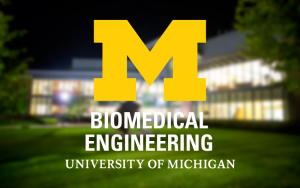Presented By: Biomedical Engineering
BME Master's Defense: Fatimah Alkaabi
Behavioral and Electrophysiological Measures of Hyperacusis in Guinea Pigs

The central auditory system consists of the brain nuclei that transmit peripheral auditory nerve input to the auditory cortex for hearing perception. Damage to the auditory end organ, the cochlea, can result in hearing loss that drives the central auditory system to disarray causing disorders such as hyperacusis and tinnitus. These disorders can negatively affect patients’ quality of life. Tinnitus sufferers generally describe their tinnitus as a narrowband of sound that occurs in quiet, while hyperacusis sufferers express an exaggerated perception of sound level or intensity. These two disorders are often grouped together because tinnitus sufferers tend to report symptoms of hyperacusis and vice versa. However, hyperacusis and tinnitus do not always co-occur, suggesting that they have different neural origins. To study these conditions, researchers have induced cochlear damage in animal models, followed by behavioral and electrophysiological assessments. However, no study has adequately distinguished hyperacusis from tinnitus in individual animals. In this thesis, I detail the development of a novel hyperacusis and tinnitus assessment paradigm for individual animals using the pinna reflex combined with auditory brainstem responses (ABR). In the first chapter, I detail several enhancements to a computer system that ensures accurate sound presentation concurrently with capture of pinna reflex video data, as well as streamlines the subsequent data analysis. In the second chapter, the ABR, an evoked potential reflecting the summed electrical activity of cells in the auditory brainstem pathway, was assessed. Several studies suggest that ABR-wave characteristics might provide evidence of hyperacusis. ABRs were evoked using conventional and novel sound stimuli. They were then examined to look for possible indications of hyperacusis in noise overexposed guinea pigs. The present findings are discussed with several suggestions for future hyperacusis assessments.
Date: Friday, April 16, 2021
Time: 12:00 PM
Zoom: https://umich.zoom.us/j/91698183229
Chair: Dr. Susan Shore
Date: Friday, April 16, 2021
Time: 12:00 PM
Zoom: https://umich.zoom.us/j/91698183229
Chair: Dr. Susan Shore